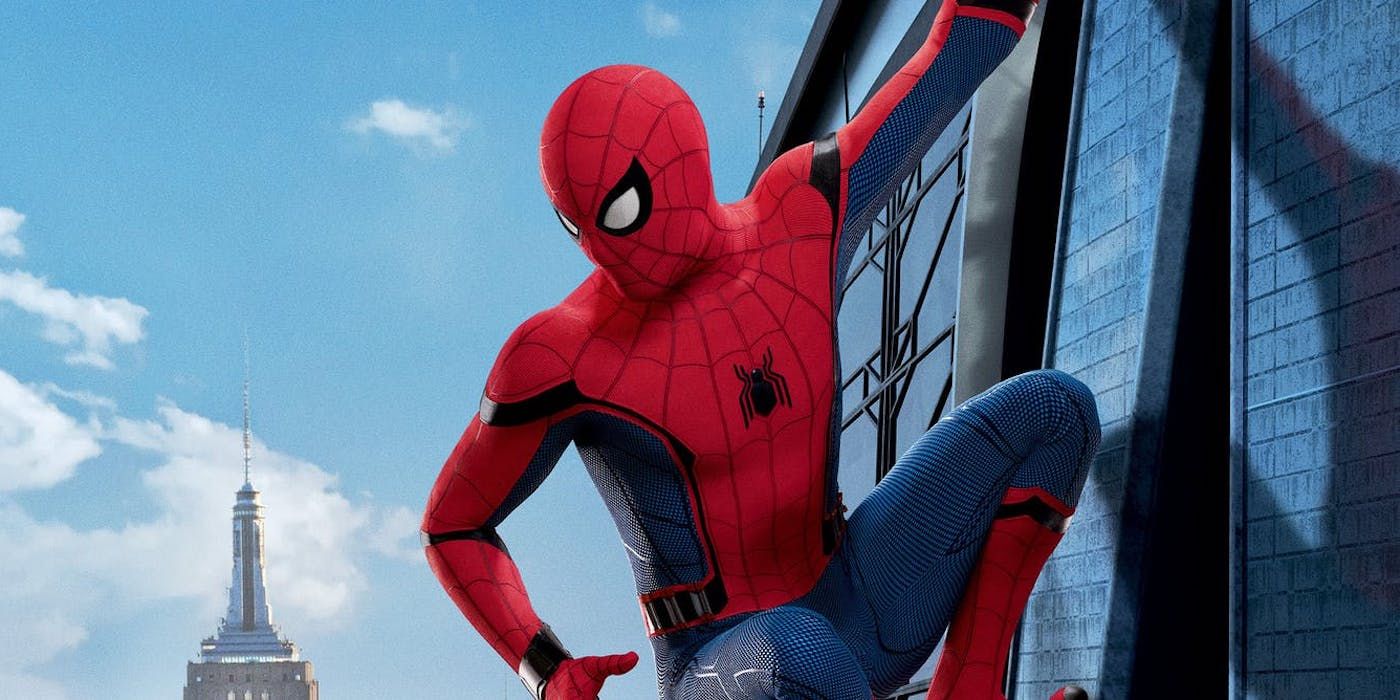
Leading up to the release of Spider-Man: No Way Home, it's worthwhile to look back and reflect on what past iterations of the franchise have done right, and what elements of the "Spider-verse" can be improved in future films.
When Tom Holland took on the role of the friendly hero in 2017, he added some much-needed levity to the franchise by imbuing the films with his boyish charm. Through Holland's mixture of awkward adolescence and childhood innocence, Spider-Man: Homecoming separated itself from its predecessors, by not only re-establishing the hero's origin story, but also turning the classic tale into a delightful teenage romantic-comedy. However, in the follow-up to Homecoming, director Jon Watts made one crucial mistake: he took Spider-Man out of New York City.
RELATED: Tom Holland Is "Obsessed" With WandaVision, Jokes About Secret Cameo
With so many iterations of the franchise, it's time Spidey learned from his past mistakes, and this is a crucial one. Spider-Man has always been a unique hero, in that he is a local figure. Unlike the rest of the Avengers crew, Spider-Man is a neighborhood superhero. When Watts took Spider-Man out of NYC during a class trip to Italy in Spider-Man: Far From Home, he separated the hero from his roots, and in doing so, dismantled the contained structure of Spider-Man's comic narrative.
Whereas Homecoming spends much of the film in the comedic high school realm, Far From Home sprinkles these moments in as mere additives to the film's primary narrative, which focuses on the red herring spectacle of Jake Gyllenhaal's Mysterio, as well as the novelty of the new setting. By removing Spider-Man from his regular stomping grounds, Watts opens the film up to the greater stakes of the MCU. In doing so, Watts unintentionally draws a comparison between Spider-Man and other MCU films, rather than allowing the film to speak for itself. Through this comparison, Watts lowers the stakes of Spidey's current predicament by pairing him alongside the universe-shattering conflicts of the Avengers movies.
In recent years, Sam Raimi's Spider-Man trilogy has been much critiqued for Raimi's use of song and dance and the advent of "Emo Peter" in Spider-Man 3, but one thing Raimi got right the first time around was his decision to keep Spider-Man's narrative arc contained to New York City. In Spider-Man 2, Raimi underscores the connection between Spider-Man and his hometown during a scene in which Spider-Man is knocked unconscious after saving a train full of New York citizens.
During the scene, Spider-Man's mask falls off, revealing his identity to the entire train. However, rather than sharing this news with the rest of the world and compromising Parker's anonymity, the passengers unanimously agree to keep this information to themselves as a tribute to Spidey's heroism. In this touching moment, Raimi showcases how important Spider-Man is to New Yorkers. He is not just any hero, but their hero, and they will do all that they can to protect him as well as he protects them.
Moreover, Spider-Man embodies the New Yorker mentality. Spidey is by no means the most physically powerful of the Marvel superheroes. Yes, he has super strength and agility, but his webs are not his own, and he is largely reliant on technology. However, what separates Spider-Man from his heroic counterparts and allows him to defeat formidable villains like Doc Ock and the Green Goblin, is his unstoppable willpower and uncanny resilience. New Yorkers are known for their mental strength and their willingness to move forward in the face of adversity. Spider-Man serves as an emblem of this mentality, perfectly embodying the city he chooses to serve and protect. By taking Spider-Man out of New York, Watts removed a vital character from the story: the city itself.
Spider-Man's primary antagonists have also always been intricately interwoven into his daily life in NYC. For example, in many iterations of the Spider-Man comics, Peter Parker works for editor-in-chief of The Daily Bugle, J. Jonah Jameson. During his day job, Parker is instructed to capture incriminating photographs of Spider-Man in the act, in Jameson's attempts to carry-out a smear campaign against the vigilante. Little does Jameson know that Parker is actually the friendly-webbed hero.
This tension between Parker's civilian persona and his secret identity is both entertaining in its irony and creates a constant source of conflict for the narrative. The compelling dynamic between Parker's everyday life and his heroic identity is also reflected in Parker's work at Oscorp Industries, where he conducts research for CEO turned supervillain, Norman Osborne. In Spider-Man: Homecoming, Watts successfully updates this trope to serve Tom Holland's iteration of the character, when he reveals that the Vulture (Micheal Keaton), is also the father of Parker's romantic interest, Liz.
As of late, no plot details for Spider-Man: No Way Home have been released. Therefore, audiences will have to wait and see if Watts decides to keep Spidey in New York, or if he once again takes the hero out of the big apple. For now, audiences can only speculate and hope that whatever decision Watts makes, it is the right one for the franchise.
Spider-Man: No Way Home is set to be released on December 17th, 2021.
MORE: Every Spider-Man Movie Series Got The Same Thing Right

